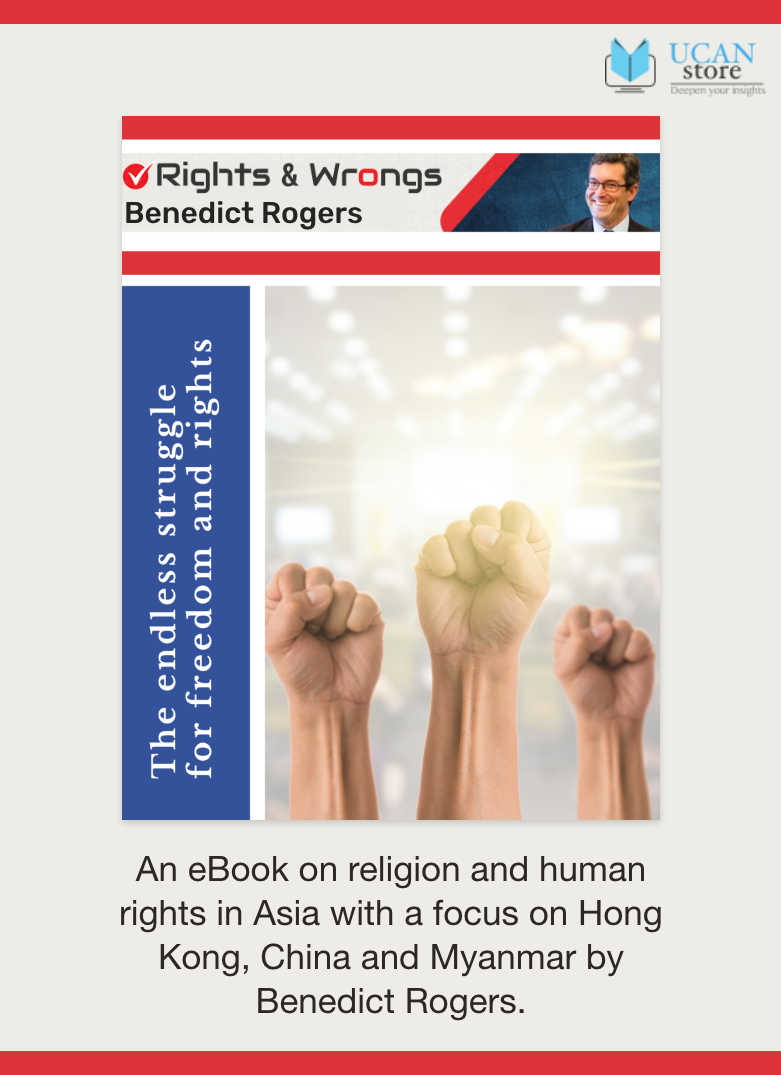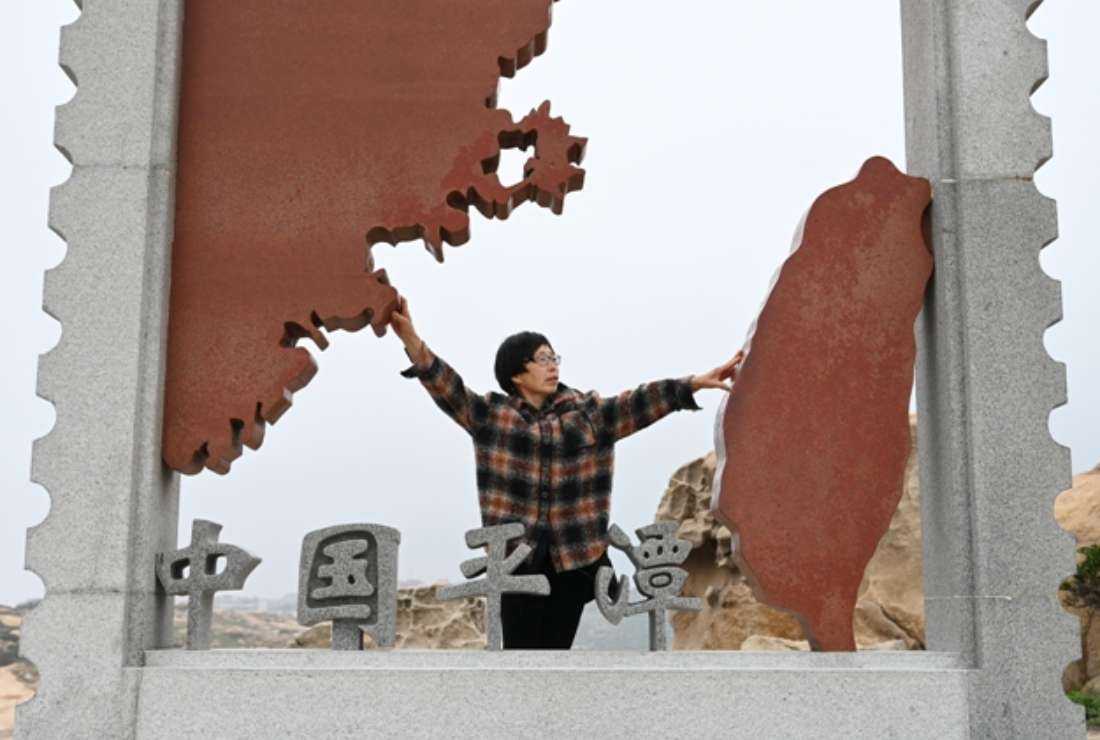
US capital is in no mood to give up its numero uno status without a fight

A Chinese tourist poses for photos with an installation depicting Taiwan (right) and mainland China at a tourist area on Pingtan island, the closest point to Taiwan, in China's southeast Fujian province on April 6. (Photo: Greg Baker/ AFP)
Aided by green energy and invasive digital technologies, and powered by social inclusion and the much-touted Sustainable Development Goals (SDGs), this millennium would have witnessed the historic arrival of the much-acclaimed Asian Century if not for the ongoing war in Eastern Europe and the US-China rivalry for economic supremacy.
As the threat of a US-led war against China looms large, governments controlling giant Asian economies like Japan, India and South Korea and emerging powerhouses like Vietnam, Indonesia, Malaysia and the Philippines are shopping for cutting-edge arms and lethal ammunition. Their shopping spree, which also includes forming military alliances, has drained their coffers as their priorities and long-term goals have changed forever.
The current mantra of Asian governments is to ready their military, which can both covertly and overtly take part when the US-led theater of war comes calling to Asia.
If not for the war in Eastern Europe, bordering Asia, and the US-China rivalry, the massive concentration of capital in Asia would have made the ‘Asianized Century’ a reality.
More than half of humanity housed in Asia, would be contributing more than 50 percent of world GDP and would account for nearly 40 percent of global consumption by 2040, taking an active part in global trade.
Asian culture would have become as ubiquitous as European art and fashion and American films and music. Asia would have become the talk of the town in the Western capitals.
The Asian Century is an economic project and parallels the economic prosperity of 19th-century colonial Britain and the 20th-century US.
Unlike Europe, which prospered with a massive concentration of capital treacherously extracted from third-world Asian and African countries through genocidal colonialism, and the US, which needed two global wars to wrest control from Europe, Asia’s economic predominance in the Asianized Century was predicted to be calm and peaceful.
As a special bonus, Asians would have become rich before they became aged as happened with Europe.
Since the US-China confrontation involves identity and ideological issues, it is often portrayed as a clash between authoritarian and democratic regimes. Asian countries, including bankrupt Sri Lanka, crisis-hit Pakistan, and economically weak Nepal, have wasted no time to incline towards the US, citing an existential threat from the communist country.
But all of them, at the same time, have managed to cultivate a soft corner for China’s high-tech initiatives, which comes at an affordable price unlike the know-how and the investments from Washington that come with a lot of strings attached.
In its bid to contain China, Asia’s economic backbone, the US has already set in motion an aggressive trade war with strict monitoring of investments to pull supply chains out of the Chinese mainland. These efforts are further complimented by the Quad Alliance, and many more military maneuverings, involving rich Asian nations like Japan, India and South Korea.
Rich Asian nations are making a beeline to be part of US President Joe Biden’s $9 billion rule-based Indo-Pacific Deterrence Initiative, a Pentagon project to cement ties with all-weather allies like Japan, South Korea, the Philippines, and Thailand in Asia.
Without allies like Japan, India, and South Korea, the US cannot wage a war against China due to a logistical problem – too much equipment and arms to haul from “fort to port” to take on an enemy like cyber-space advanced China, which can easily disrupt a planned attack and can subsequently launch a counter-attack against US interests worldwide.
Capital under US capitalism was going well until capital with “Chinese characteristics” gave it a run for the money in 2014 when China for the first time overtook the US to become the world's largest economy. Since then, the US economy is descending, while that of China is ascending.
But the US capital is in no mood to give up its numero uno status without a fight.
When Adam Smith and David Ricardo laid the foundation stone for capitalism, they put Western capitalists as their torch-bearers. So, if China and its economic model lord over, then Western capitalism will operate with “Chinese characteristics” and Adam Smith may be replaced by Mao Tse Tung as the father of the new system.
It means one side should give up to help the Asian Century to spread its wings in a peaceful process.
*The views expressed in this article are those of the author and do not necessarily reflect the official editorial position of UCA News.
Help us keep UCA News independent
The Church in Asia needs objective and independent journalism to speak the truth about the Church and the state.
With a network of professionally qualified journalists and editors across Asia, UCA News is just about meeting that need. But professionalism does not come cheap. We depend on you, our readers, to help maintain our independence and seek that truth.
A small donation of US$2 a month would make a big difference in our quest to achieve our goal.

Share your comments